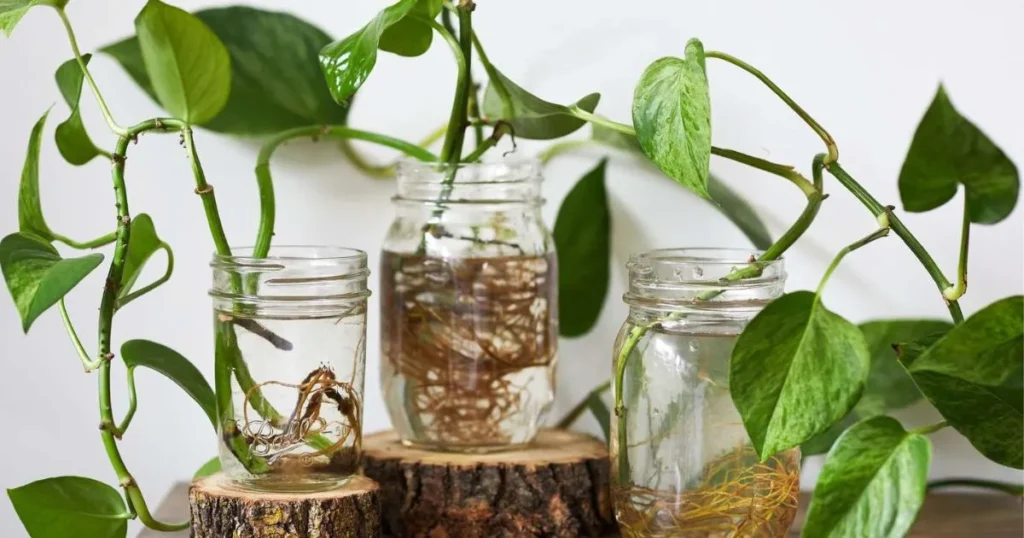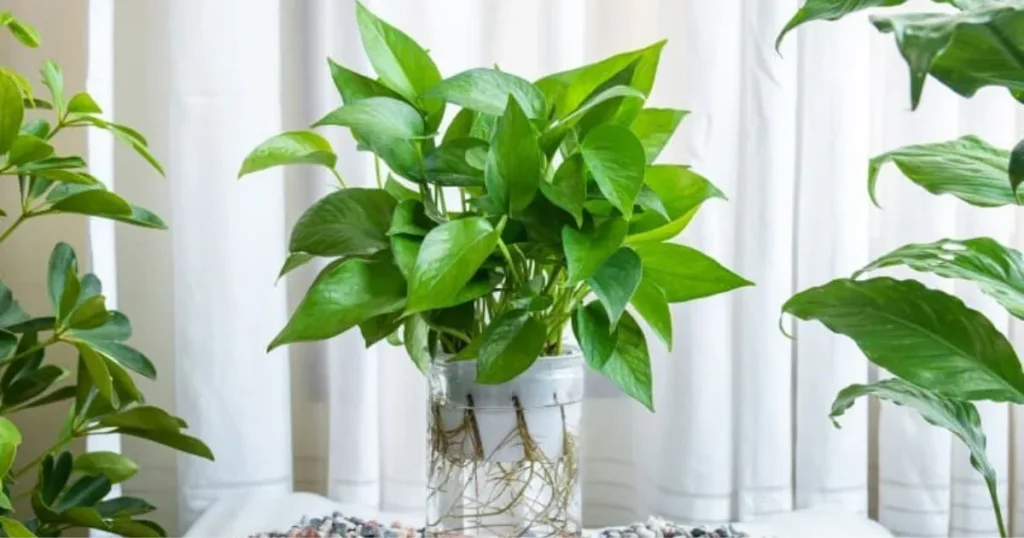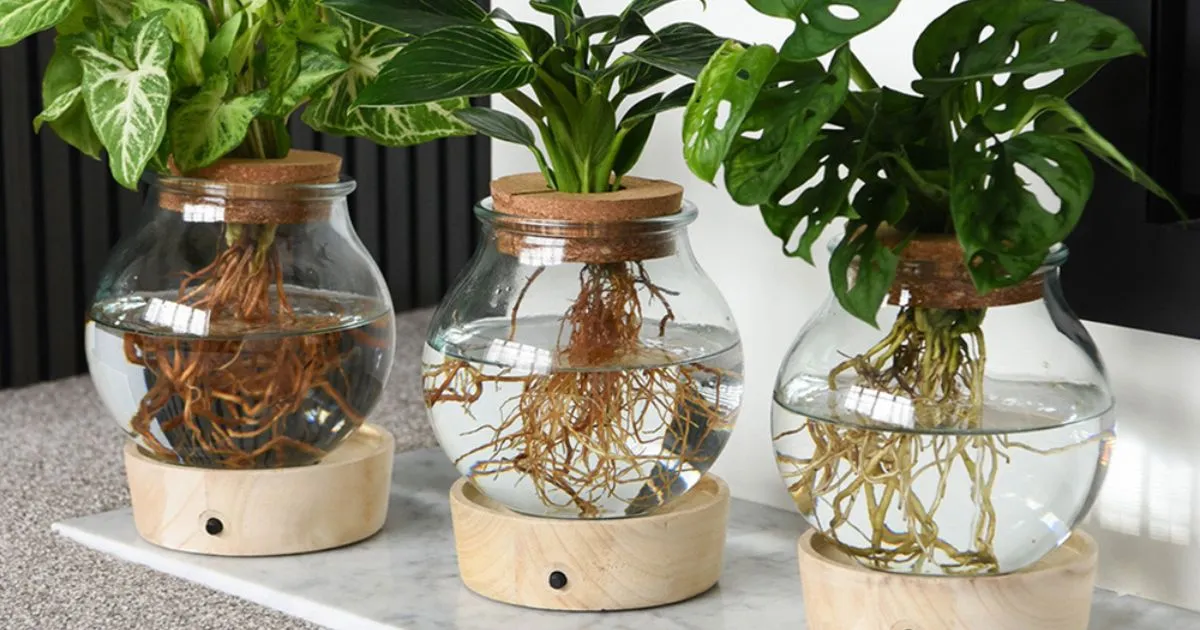Table of Contents
Introduction to Aquatic House Plants
Aquatic house plants have become an increasingly popular choice among indoor plant enthusiasts and aquarists alike. These plants thrive in or around water, transforming a basic living space into a peaceful, natural retreat. Their ability to live submerged in water, their aesthetic appeal, and their ability to improve air and water quality make them an excellent choice for creating a healthy, calming environment.
Unlike traditional house plants, which are often grown in soil, aquatic plants absorb nutrients and oxygen directly from the water. Their submerged nature often leads to a striking aesthetic that mimics the tranquility of ponds, lakes, and rivers. Incorporating aquatic plants into your home offers not only beauty but also a touch of nature’s grace.
In this article, we’ll explore everything you need to know about aquatic house plants: from the types of plants available to their benefits, care requirements, and even how they can enhance your aquatic environment.
The Types of Aquatic House Plants
Aquatic plants are broadly categorized based on their growth habits and how they interact with the water. The three main types are floating plants, rooted plants, and emergent plants. Each type of plant offers different visual and functional benefits to your indoor water feature.
Floating Aquatic Plants
Floating plants are perhaps the easiest to incorporate into any indoor water feature. These plants float on the water’s surface without any need for anchorage. Floating plants typically have roots that dangle below the surface, absorbing nutrients from the water. They play a significant role in keeping water clean by absorbing excess nutrients and helping maintain a balanced ecosystem in aquariums.
Some of the most popular floating aquatic plants include:
- Water Hyacinth (Eichhornia crassipes): Known for its striking purple flowers and large, glossy green leaves, water hyacinth is a beautiful addition to any water feature. It’s highly effective in nutrient removal.
- Duckweed (Lemna minor): This small, fast-growing plant forms a thick mat on the surface of water. Duckweed is excellent at absorbing excess nutrients, which helps prevent algae growth.
- Water Lettuce (Pistia stratiotes): A member of the water cabbage family, water lettuce is another floating plant with large rosettes of soft, green leaves that resemble lettuce heads. Its rapid growth makes it useful for managing nutrient-rich water.
Rooted Aquatic Plants
Rooted aquatic plants are submerged plants that anchor to the bottom of a water feature, either in soil or a special aquatic substrate. These plants are often used to add structure and depth to aquariums, ponds, and other water features. Their roots absorb nutrients directly from the substrate, while their foliage grows above the water’s surface.
Notable rooted aquatic plants include:
- Java Fern (Microsorum pteropus): Java fern is a hardy, low-maintenance plant that thrives in aquariums with low light. It is popular for aquascaping due to its ability to grow in a variety of water conditions.
- Amazon Sword (Echinodorus amazonicus): Amazon sword is a larger plant known for its sword-shaped leaves. It requires a nutrient-rich substrate and can grow quite large, making it ideal for larger aquariums or ponds.
- Anubias (Anubias barteri): Anubias is another low-maintenance plant that is often used in aquascaping. It is ideal for aquariums, where it can be attached to rocks or driftwood. Anubias plants can thrive even in lower light conditions.
Emergent Aquatic Plants
Emergent plants are those that grow partially submerged in water. These plants have their roots in the substrate or aquatic environment, but their leaves and stems extend above the water’s surface. They are perfect for larger indoor ponds or water gardens, creating a lush, tropical look.
Some examples of emergent aquatic plants are:
- Water Iris (Iris pseudacorus): The water iris is known for its vibrant yellow flowers. This plant grows along the edges of ponds and is ideal for creating a border of color and structure.
- Papyrus (Cyperus papyrus): Papyrus is a tall, grass-like plant with a unique appearance. Its tall stalks make it perfect for adding a dramatic touch to your water feature.
- Creeping Jenny (Lysimachia nummularia): Often used as a groundcover plant in moist environments, creeping Jenny produces small, cup-shaped yellow flowers and can spread quickly along the edges of water features.

Benefits of Aquatic House Plants
Incorporating aquatic house plants into your indoor environment offers several key benefits, including aesthetic enhancement, natural water filtration, and a healthier environment for both humans and animals. Let’s dive deeper into the advantages they bring.
1. Aesthetic Appeal
Aquatic plants offer a unique beauty to indoor spaces. Their lush green leaves, colorful blooms, and the gentle movement of leaves and stems in the water create a tranquil ambiance. Whether floating on the surface or rooted in the substrate, these plants provide a natural focal point and a calming atmosphere.
2. Improved Air and Water Quality
Aquatic plants act as natural air purifiers. Just like their terrestrial counterparts, they absorb carbon dioxide and release oxygen, improving indoor air quality. Additionally, submerged plants help filter and clean the water in aquariums and ponds by absorbing excess nutrients and breaking down organic matter. This helps maintain a healthy and clear water environment.
3. Stress Reduction and Relaxation
Being around water has been shown to reduce stress and anxiety levels. Aquatic plants, combined with the soothing presence of water, contribute to creating a peaceful sanctuary within the home. The sight of water plants swaying gently in the water and their calming, natural beauty promotes relaxation and well-being.
4. Support for Aquatic Life
For those who keep fish or aquatic animals, these plants provide essential shelter, breeding grounds, and oxygenation. Aquatic plants play an integral role in creating a balanced ecosystem within aquariums and ponds, which is beneficial for the overall health and longevity of aquatic creatures.
Care and Maintenance of Aquatic House Plants
While aquatic plants can be relatively easy to care for, they still require attention to thrive. Proper lighting, water quality, and occasional fertilization are key to keeping these plants healthy.
1. Lighting Requirements
Most aquatic plants require moderate to high-intensity lighting to thrive. The type of light you choose will depend on the needs of the specific plants in your setup. For aquariums, high-quality LED aquarium lights provide a full spectrum that supports photosynthesis and plant health. Depending on the plant species, light should be provided for 8 to 12 hours a day.
2. Water Quality and Temperature
For most aquatic plants, maintaining proper water quality is crucial. They prefer slightly acidic to neutral pH levels (6.5-7.5) and should be kept in clean, well-oxygenated water. Regular water changes are necessary to remove excess nutrients, which helps to reduce the risk of algae blooms. Temperature should also be kept in mind, as different aquatic plants have varying temperature preferences.
3. Fertilization
Aquatic plants often require regular fertilization to thrive, particularly if they are in a tank without live fish, which would naturally provide nutrients. Liquid fertilizers can be added to the water, while substrate-rooted plants benefit from nutrient-rich soil or specialized root tabs placed in the substrate.
4. Pruning and Maintenance
Pruning is necessary to ensure that plants don’t become overgrown, especially in smaller aquariums or ponds. Trim dead leaves, remove debris, and keep an eye out for any signs of disease. Some plants may also benefit from occasional replanting to maintain healthy root systems.
Common Aquatic House Plants and Their Characteristics
Let’s take a deeper look at some popular aquatic plants that you can easily incorporate into your home.
1. Java Moss (Taxiphyllum barbieri)
- Type: Rooted
- Characteristics: Java Moss is one of the easiest aquatic plants to grow and care for. It is an ideal choice for beginners and can grow in low-light conditions. It’s often used in aquascaping, and its long, delicate strands provide hiding places for small fish, shrimp, and other aquatic creatures.
2. Amazon Sword (Echinodorus amazonicus)
- Type: Rooted
- Characteristics: This large plant is known for its sword-shaped leaves, making it an attractive choice for larger aquariums. It requires a nutrient-rich substrate and moderate to bright lighting. Amazon Sword is a great plant for adding structure and depth to aquascapes.
3. Water Lettuce (Pistia stratiotes)
- Type: Floating
- Characteristics: Water Lettuce is easy to grow and can help reduce algae blooms in aquariums by absorbing excess nutrients. Its light green rosettes float gracefully on the water surface, adding a lush, tropical vibe to the aquarium.

Conclusion
Aquatic house plants are a beautiful, functional addition to any indoor space. Their unique ability to thrive in water makes them a captivating choice for enhancing your home’s aesthetic appeal. Whether you’re looking to create a serene and tranquil atmosphere or provide a thriving environment for your fish, these plants will not only improve the look of your space but also contribute to a healthier environment. By understanding the different types of aquatic plants and their care requirements, you can build an indoor aquatic paradise that enhances both the beauty and functionality of your home.
Frequently Asked Questions (FAQ)
Q1: Can aquatic plants survive without a filter in an aquarium?
A1: While some hardy plants can survive without a filter, using a filter helps maintain water quality and promotes plant health. Filters keep the water oxygenated, remove excess nutrients, and prevent algae growth.
Q2: How often should I fertilize my aquatic plants?
A2: The frequency of fertilization depends on the plant species and setup. Generally, liquid fertilizers can be added once a week, while substrate-rooted plants may benefit from root tabs every month or so.
Q3: Do aquatic plants require special lighting?
A3: Yes, aquatic plants need lighting that mimics natural sunlight. LED aquarium lights or plant-specific grow lights provide the necessary light spectrum for healthy growth.
Q4: What are some easy-to-care-for aquatic plants for beginners?
A4: Easy-to-care-for aquatic plants include Java Fern, Anubias, and Water Wisteria. These plants are hardy, require minimal care, and adapt well to a range of water conditions.

